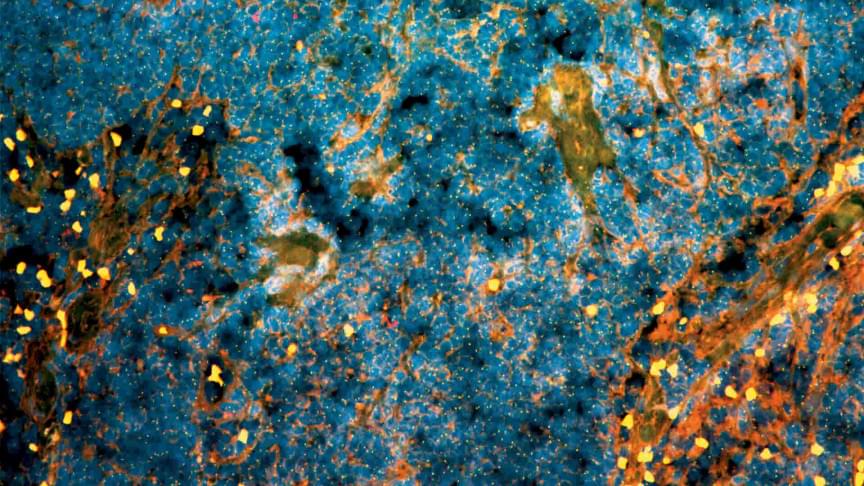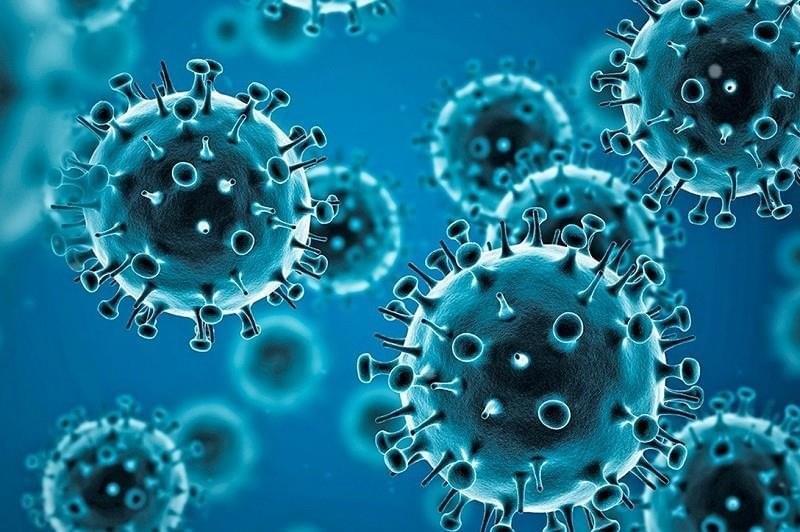It’s not easy being green.



Prostate cancer growth is driven by male sex hormones called androgens. And so, lowering levels of these hormones can help slow the growth of cancer.
Hormone therapy has been successful in keeping metastatic, or advanced prostate cancer, under control. Patients with metastatic prostate cancer often receive treatment with anti-hormonal therapy, which inhibits the signal sent out by testosterone that stimulates tumor growth.
But eventually, the tumor cells could become resistant to it. An international team of researchers led by the Netherlands Cancer Institute has now unveiled an “unexpected potential” solution, not designed to fight cancer but to target proteins that regulate a cell’s circadian rhythm.
Join us on Patreon!
https://www.patreon.com/MichaelLustgartenPhD
Cronometer Discount Link:
https://shareasale.com/r.cfm?b=1390137&u=3266601&m=61121&urllink=&afftrack=
Papers referenced in the video:
Age and sex variation in serum albumin concentration: an observational study.
https://pubmed.ncbi.nlm.nih.gov/26071488/
Commonly used clinical chemistry tests as mortality predictors: Results from two large cohort studies.
https://pubmed.ncbi.nlm.nih.gov/33152050/
Calculate your biological age with Levine’s test using the downloadable Excel file in this link:

From the engine in your car to the components in your laptop, mechanical systems tend to heat up when they’re working harder. Now new research has revealed that the same can be said of the brain – and it runs hotter than was previously thought.
Some parts of the deep brain can get up to 40 °C (104 °F), a new study shows, though this varies by sex, time of day, and various other factors. Compare that with the average oral temperature in human bodies, which is typically under 37 °C (98.6 °F).
This isn’t a sign of malfunctioning though, researchers think, and may actually be evidence that the brain is operating healthily. Unusual heat signatures could potentially be used in the future to look for signs of brain damage or disorder.
Join us on Patreon!
https://www.patreon.com/MichaelLustgartenPhD
Cronometer Discount Link:
https://shareasale.com/r.cfm?b=1390137&u=3266601&m=61121&urllink=&afftrack=
Papers referenced in the video:
Glycine supplementation extends lifespan of male and female mice.
https://pubmed.ncbi.nlm.nih.gov/30916479/
Ergothioneine exhibits longevity-extension effect in Drosophila melanogaster via regulation of cholinergic neurotransmission, tyrosine metabolism, and fatty acid oxidation.
https://pubmed.ncbi.nlm.nih.gov/34877949/
17-a-estradiol late in life extends lifespan in aging UM-HET3 male mice; nicotinamide riboside and three other drugs do not affect lifespan in either sex.
https://pubmed.ncbi.nlm.nih.gov/33788371/
Metagenomic and metabolomic remodeling in nonagenarians and centenarians and its association with genetic and socioeconomic factors.

In celebration of Pride Month, Inara, one of our moderators, is fundraising to pay for her transition surgery. I donated.
Gender dysphoria is the term used to describe a sense of discomfort or distress that a person may experience because of a mismatch between their gender identity and their sex assigned at birth. Methods of relieving gender dysphoria include transitioning socially (pronoun usage, name change, etc.) and physically (surgery).
I have medical insurance but it does not cover trans healthcare. Yes, we are still fighting for trans rights! I need allies willing to take action on my behalf.

Electric organs help electric fish, such as the electric eel, do all sorts of amazing things: They send and receive signals that are akin to bird songs, helping them to recognize other electric fish by species, sex and even individual. A new study in Science Advances explains how small genetic changes enabled electric fish to evolve electric organs. The finding might also help scientists pinpoint the genetic mutations behind some human diseases.
Evolution took advantage of a quirk of fish genetics to develop electric organs. All fish have duplicate versions of the same gene that produces tiny muscle motors, called sodium channels. To evolve electric organs, electric fish turned off one duplicate of the sodium channel gene in muscles and turned it on in other cells. The tiny motors that typically make muscles contract were repurposed to generate electric signals, and voila! A new organ with some astonishing capabilities was born.
“This is exciting because we can see how a small change in the gene can completely change where it’s expressed,” said Harold Zakon, professor of neuroscience and integrative biology at The University of Texas at Austin and corresponding author of the study.
Join us on Patreon!
https://www.patreon.com/MichaelLustgartenPhD
Papers referenced in the video:
Inter-and intraindividual variability in daily resting heart rate and its associations with age, sex, sleep, BMI, and time of year: Retrospective, longitudinal cohort study of 92,457 adults.
https://pubmed.ncbi.nlm.nih.gov/32023264/
Heart rate variability with photoplethysmography in 8 million individuals: a cross-sectional study.
https://pubmed.ncbi.nlm.nih.gov/33328029/

New estimates from the World Health Organization (WHO) show that the full death toll associated directly or indirectly with the COVID-19 pandemic (described as “excess mortality”) between 1 January 2020 and 31 December 2021 was approximately 14.9 million (range 13.3 million to 16.6 million). “These sobering data not only point to the impact of the pandemic but also to the need for all countries to invest in more resilient health systems that can sustain essential health services during crises, including stronger health information systems,” said Dr Tedros Adhanom Ghebreyesus, WHO Director-General. “WHO is committed to working with all countries to strengthen their health information systems to generate better data for better decisions and better outcomes.” Excess mortality is calculated as the difference between the number of deaths that have occurred and the number that would be expected in the absence of the pandemic based on data from earlier years. Excess mortality includes deaths associated with COVID-19 directly (due to the disease) or indirectly (due to the pandemic’s impact on health systems and society). Deaths linked indirectly to COVID-19 are attributable to other health conditions for which people were unable to access prevention and treatment because health systems were overburdened by the pandemic. The estimated number of excess deaths can be influenced also by deaths averted during the pandemic due to lower risks of certain events, like motor-vehicle accidents or occupational injuries. Most of the excess deaths (84%) are concentrated in South-East Asia, Europe, and the Americas. Some 68% of excess deaths are concentrated in just 10 countries globally. Middle-income countries account for 81% of the 14.9 million excess deaths (53% in lower-middle-income countries and 28% in upper-middle-income countries) over the 24-month period, with high-income and low-income countries each accounting for 15% and 4%, respectively. The estimates for a 24-month period (2020 and 2021) include a breakdown of excess mortality by age and sex. They confirm that the global death toll was higher for men than for women (57% male, 43% female) and higher among older adults. The absolute count of the excess deaths is affected by the population size. The number of excess deaths per 100,000 gives a more objective picture of the pandemic than reported COVID-19 mortality data.“Measurement of excess mortality is an essential component to understand the impact of the pandemic. Shifts in mortality trends provide decision-makers information to guide policies to reduce mortality and effectively prevent future crises. Because of limited investments in data systems in many countries, the true extent of excess mortality often remains hidden,” said Dr Samira Asma, Assistant Director-General for Data, Analytics and Delivery at WHO. “These new estimates use the best available data and have been produced using a robust methodology and a completely transparent approach.”“Data is the foundation of our work every day to promote health, keep the world safe, and serve the vulnerable. We know where the data gaps are, and we must collectively intensify our support to countries, so that every country has the capability to track outbreaks in real-time, ensure delivery of essential health services, and safeguard population health,” said Dr Ibrahima Socé Fall, Assistant Director-General for Emergency Response. The production of these estimates is a result of a global collaboration supported by the work of the Technical Advisory Group for COVID-19 Mortality Assessment and country consultations. This group, convened jointly by the WHO and the United Nations Department of Economic and Social Affairs (UN DESA), consists of many of the world’s leading experts, who developed an innovative methodology to generate comparable mortality estimates even where data are incomplete or unavailable. This methodology has been invaluable as many countries still lack capacity for reliable mortality surveillance and therefore do not collect and generate the data needed to calculate excess mortality. Using the publicly available methodology, countries can use their own data to generate or update their own estimates. “The United Nations system is working together to deliver an authoritative assessment of the global toll of lives lost from the pandemic. This work is an important part of UN DESA’s ongoing collaboration with WHO and other partners to improve global mortality estimates,” said Mr Liu Zhenmin, United Nations Under-Secretary-General for Economic and Social Affairs. Mr Stefan Schweinfest, Director of the Statistics Division of UN DESA, added: “Data deficiencies make it difficult to assess the true scope of a crisis, with serious consequences for people’s lives. The pandemic has been a stark reminder of the need for better coordination of data systems within countries and for increased international support for building better systems, including for the registration of deaths and other vital events.” Note for editors: The methods were developed by the Technical Advisory Group for COVID-19 Mortality Assessment, co-chaired by Professor Debbie Bradshaw and Dr. Kevin McCormack with extensive support from Professor Jon Wakefield at the University of Washington. The methods rely on a statistical model derived using information from countries with adequate data; the model is used to generate estimates for countries with little or no data available. The methods and estimates will continue to be updated as additional data become available and in consultation with countries.

Pharmaceutical intervention of aging requires targeting multiple pathways, thus there is rationale to test combinations of drugs targeting different but overlapping processes. In order to determine if combining drugs shown to extend lifespan and healthy aging in mice would have greater impact than any individual drug, a cocktail diet containing 14 ppm rapamycin, 1,000 ppm acarbose, and 1,000 ppm phenylbutyrate was fed to 20-month-old C57BL/6 and HET3 4-way cross mice of both sexes for three months. Mice treated with the cocktail showed a sex and strain-dependent phenotype consistent with healthy aging including decreased body fat, improved cognition, increased strength and endurance, and decreased age-related pathology compared to mice treated with individual drugs or control. The severity of age-related lesions in heart, lungs, liver, and kidney was consistently decreased in mice treated with the cocktail compared to mice treated with individual drugs or control, suggesting an interactive advantage of the three drugs. This study shows that a combination of three drugs, each previously shown to enhance lifespan and health span in mice, is able to delay aging phenotypes in middle-aged mice more effectively than any individual drug in the cocktail over a 3-month treatment period.
© 2022. The Author(s).
Conflict of interest statement.